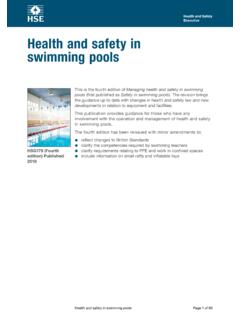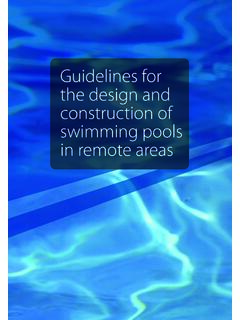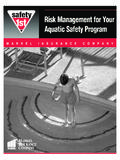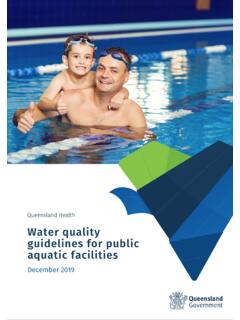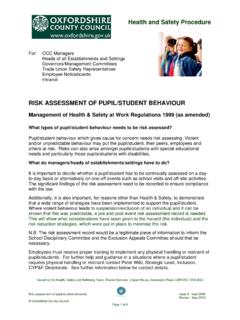Transcription of Swimming Pool Risk Assessment - MVRMA
1 1 Swimming Pool Risk Assessment This is not an exhaustive list of things which you should include within your risk Assessment , each premises is different. You should also consider hazardous substances and ill health as a result of poor water quality. If you wish to copy or use any of the information contained within this document please acknowledge the source (Health and Safety Executive Managing health and safety in Swimming pools ) Produced by Environmental Health & Housing: Health and Safety Team 2012 Step 1: What are the hazards?
2 Step 2: Who might be harmed and how? Step 3: What are you already doing? What further action is necessary? Risk of Drowning Customers (if they become unconscious or cannot swim properly). Staff (during rescue) Lifeguards on poolside Training lifeguards Displaying safety signs Lifeguards on rotas Children are not to be left unsupervised. Reduce glare on the pool, to ensure lifeguards can see all areas of the pool. Place staff in a better position to avoid glare & staff rotation at different points.
3 Add clearer signs to show the depth of water Clear No Diving signs Hard to Observe Areas: Swimmers getting into difficulty without the lifeguards knowing. Customers could be put at risk if they get into trouble. Training lifeguards Placing lifeguards in sensible positions around the pool & job rotation Displaying clear safety signage in these areas Increase the amount of lifeguards in these areas Reposition staff if the area isn t supervised properly. Slips, Trips and Falls: Slippery changing room floors, spills on the floor, uneven surfaces, equipment on floor.
4 Customers Staff Trades All could be harmed if they trip over things left on the floor or slip on a wet surface. Cleaning up spills & ensure that equipment is stored properly. Signage Regularly clear pooling water. Staff wear sensible shoes Specialist cleaning products used to add a non-slip barrier. Clear colour contrast between areas with a change of level. Placing non-slip mats in areas which are high risk Consider anti-slip flooring Ensure that equipment can be stored in a suitable receptacle Change the colour of the pool edge so that people will know where the edge is.
5 2 Swimming Pool Risk Assessment This is not an exhaustive list of things which you should include within your risk Assessment , each premises is different. You should also consider hazardous substances and ill health as a result of poor water quality. If you wish to copy or use any of the information contained within this document please acknowledge the source (Health and Safety Executive Managing health and safety in Swimming pools ) Produced by Environmental Health & Housing: Health and Safety Team 2012 Step 1: What are the hazards?
6 Step 2: Who might be harmed and how? Step 3: What are you already doing? What further action is necessary? Water Slides: Walking into them, injury in the splashdown pools, slippery stairs. Customers & Staff Collision between people, slip on stair case. Clear sightline between the launch platform and splashdown pool A 2m gap between the bottom of the slide and the floor Use the correct sized splashdown pool Make sure the splashdown area is clear of other users Have the correct sized stairs on the slide Using a non-slip surface for the stairs and launching platform Place cameras or traffic light systems so staff at the launch platform know when the splashdown pool is clear Place impact-absorbing padding on parts of the slide which are below 2m
7 In height Place rails to stop other people getting in the pool If the stairs are too wide, add a barrier to split circulation. If stairs are too narrow, look into getting wider stairs fitted. Ladder Access: Slipping of ladders, ladders being in the way of other swimmers, getting caught in the ladder. Customers could be harmed when they try to enter/exit the pool if they slip and bang their head or get trapped between the rungs. Making sure the handrails and steps are secure Using non-slip steps Use of wide steps Keeping the space between the steps and pool wall to a minimum Replace steps which do not have enough grip or are not wide enough to be used safely Tighten the handrails and steps if they are not secure Talk to designers to see if there is a better choice of ladders for the pool Ensure regular maintenance is carried out.
8 3 Swimming Pool Risk Assessment This is not an exhaustive list of things which you should include within your risk Assessment , each premises is different. You should also consider hazardous substances and ill health as a result of poor water quality. If you wish to copy or use any of the information contained within this document please acknowledge the source (Health and Safety Executive Managing health and safety in Swimming pools ) Produced by Environmental Health & Housing: Health and Safety Team 2012 Step 1: What are the hazards?
9 Step 2: Who might be harmed and how? Step 3: What are you already doing? What further action is necessary? Abrupt Changes in Floor levels: People could trip and lose their balance if they don t see the change in level. Customers, staff, trades visiting. Not noticing change of level, causing trip and fall. Signage to indicate where the floor level changes Mind the Step. Non-slip surfaces in these areas Handrails are available Add handrails to both sides of steps if they aren t already in place Provide high-visibility floor tiles at changes in the floor level Provide good lighting so that people can see the changes in floor level Look at removing the changes in level to see if it would be possible Inadequate Spacing Between Lockers and/or Cubicles: Open doors could cause an injury.
10 Customers and staff could be injured if locker doors are left open and they walk into them. Signage in place asking for locker doors to be shut Ensure a gap of between two rows of lockers; and a gap of between lockers and cubicles Move lockers or cubicles so they are the correct distance apart Asking the manufacturer about ways to keep the doors shut Provide warning signs if they aren t already in place Fire Equipment: Could cause an injury. Customers, staff and works people could all trip over or walk into equipment that is sticking off the wall, causing injury.
